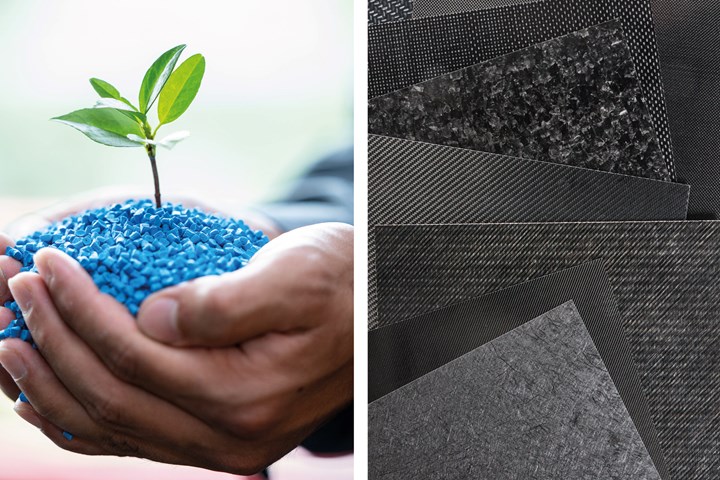Lanxess adds new sustainable product variants to Tepex composites range
Novel composite matrices and fiber reinforcement based on green materials make up these Tepex product variants.
Lanxess is currently developing new Tepex thermoplastic composites that are being made starting from recycled or bio-based raw materials. Photo Credit: Lanxess
Specialty chemicals company Lanxess (Cologne, Germany) has added new sustainable product variants to its Tepex thermoplastic composites range, including the launch of a fully bio-based composite material based on flax and polylactic acid.
According to Lanxess, development is about to be completed on a matrix plastic based on polyamide 6 (PA6) for Tepex dynalite. The material, produced from “green” cyclohexane, is comprised of more than 80% sustainable raw materials, meeting the requirements Lanxess has set fo its Scopeblue range. When the matrix for the new Tepex dynalite material is reinforced with continuous fiber fabrics, the resulting semi-finished products are said to exhibit the same optimized properties as comparable, equivalent products that are purely fossil-based. The semi-finished products are suitable for applications in structural lightweight design that are typical for Tepex dynalite — such as front-end carriers, seat shells or battery consoles.
Another new product line comprises variants of Tepex with a proportion of recycled material of up to 80% that yield surfaces with a so-called “forged carbon look,” according to the company. Corresponding components feature a grain that is reminiscent of marble. The high proportion of recycled material is based on carbon fibers from post-consumer and post-industrial waste. The fibers are used as nonwoven material or as chopped fiber mats. A variety of thermoplastics are suitable as a matrix material, Lanxess notes, such as PA6 and PA66, polypropylene or polycarbonate, whereby types of recycled material made up of these plastics can also be used.
The fibers in the composite semi-finished product have no preferred orientation, meaning that the mechanical properties of the resulting components are isotropic. The mechanical performance of the new composite material is said to approximate the high level of the continuous glass fiber-reinforced composites of the Tepex range. Applications that require high-class decor and high-grade mechanical properties — like car interiors and exteriors, or in housings for consumer electronics — define this material.
Another development focus are new matrix solutions for Tepex based on recycled thermoplastic polyurethane (TPU) or polyethylene terephthalate (PET) as well as on bio-based polyamide 10.10. The recycled TPU products are primarily intended for sports equipment. One of their strengths is good composite adhesion with several other injection-molded materials when processed using the insert molding or hybrid molding methods, the company claims. Semi-finished products with a PET recyclate matrix are also reportedly cost effective alternative to virgin polycarbonate, polyamide and polyamide 12, for example. The PET comes from used beverage bottles and is also available in large quantities thanks to the closed recycling chain for these bottles. The bio-based polyamide 10.10 is derived from castor oil.
Related Content
-
Bio-based acrylonitrile for carbon fiber manufacture
The quest for a sustainable source of acrylonitrile for carbon fiber manufacture has made the leap from the lab to the market.
-
Hexagon Purus Westminster: Experience, growth, new developments in hydrogen storage
Hexagon Purus scales production of Type 4 composite tanks, discusses growth, recyclability, sensors and carbon fiber supply and sustainability.
-
Microwave heating for more sustainable carbon fiber
Skeptics say it won’t work — Osaka-based Microwave Chemical Co. says it already has — and continues to advance its simulation-based technology to slash energy use and emissions in manufacturing.














.jpg;maxWidth=300;quality=90)


